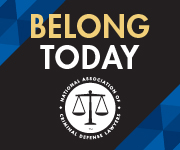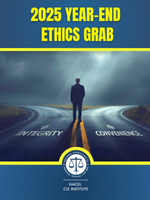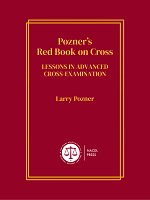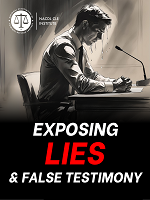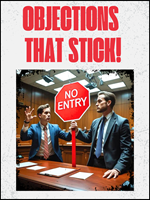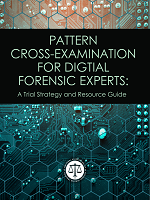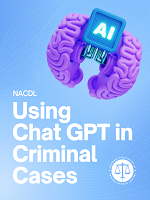Access to The Champion archive is one of many exclusive member benefits. It’s normally restricted to just NACDL members. However, this content, and others like it, is available to everyone in order to educate the public on why criminal justice reform is a necessity.
Over the past couple of months as news reports were coming out regarding indictments and plea agreements related to the Mueller investigation, nonlawyers across the country ran to their computers and typed “what is substantial assistance?” into their Google search bar. In the media, the term “substantial assistance” kept coming up in report after report. Journalists grappled with how to define and explain this nebulous term to the general public, propagating the belief that there must be big movement in the investigation if the briefs filed by the parties indicated that the cooperation was substantial. On the criminal lawyer side of the analysis, we understand “substantial assistance” to be a legal term of art with factors for departure from the guidelines to be considered by the sentencing judge as enumerated under the United States Sentencing Guidelines Section 5k1.1(a). That is all well and good, but do criminal practitioners truly understand what substantial assistance means? Does a motion made by the government under U.S.S.G. § 5k1.1 mean the same thing in California as it does in New York? What about Texas or Georgia? What about between districts in the same state? A thorough analysis of the publicly available data maintained by the Sentencing Commission{1} 1 Sentencing Commission website, www.ussc.gov. begins to tell a tale of vast differences in the way cooperation is treated nationwide.
Congress promulgated three main stated purposes for the enactment and development of the Federal Sentencing Guidelines through the Sentencing Reform Act of 1984. The second of which, and the purpose relevant to this article, is to seek reasonable uniformity in sentencing amongst similarly situated defendants,{2} 2 21 U.S.C. § 991(B)(1)(b). regardless of the jurisdiction of prosecution. For two decades, until the Supreme Court’s decision in United States v. Booker{3} 3 United States v. Booker, 543 U.S. 220 (2005). in 2005, which made them “effectively advisory,"{4} 4 Id. at 245. the mandatory nature of the Sentencing Guidelines was initially designed to prevent substantial disparity in sentencing. While defense lawyers cheered the ability to appeal to a judge who could employ discretion, the problematic nature of discretion used in a discriminatory fashion has hampered that enthusiasm. Aside from the general considerations allowed under 18 U.S.C. § 3553(a) and other departure provisions in the guidelines, often the most substantial reductions in the sentences of convicted defendants come by way of cooperation credit, either through 5k1.1 (for presentence reductions) or Rule 35(b){5} 5 Federal Rule of Criminal Procedure 35(b). (for reductions postsentencing).
Making the decision to begin cooperating with the government is a serious decision that needs to be given much consideration. Personal repercussions often come along with becoming a cooperating defendant that extend far beyond the parameters of the criminal case. A large part of that consideration is what your client might expect in return for that cooperation. So, what do we tell them? Often, the most difficult discussion is informing clients that whether they receive any cooperation credit is a decision made exclusively by the government. The determination whether their assistance has been “substantial” is a subjective one and the power rests solely in the hands of the entity that is prosecuting them. And even if it is determined that their cooperation has been substantial, the decision as to what effect that will have on their sentence is also discretionary and rests solely with the judge. Even though we cannot predict outcomes in absolutes, as attorneys and counselors we can use information that already exists to inform ourselves and our clients about what is likely and what is possible when making such an important decision.
In 2016, the Sentencing Commission issued a thorough report on Rule 35(b) reductions looking at compiled data from 2009 to 2014.{6} 6 United States Sentencing Commission, The Use of Federal Rule of Criminal Procedure 35(b) [hereinafter Report] (January 2016), available at https://www.ussc.gov/sites/default/files/pdf/research-and-publications/research-publications/2016/Rule35b.pdf.One of the main conclusions from the report was that 5k1.1 motions offered greater relief at sentencing than motions pursuant to Rule 35(b),{7} 7 Report at page 2. but looking at the statistics cited in the report, other significant factors have come to light. Most importantly, a stark lack of consistency exists across districts within a single state, across circuits, and across the nation generally with respect to cooperation credit. There is no consistency with how often cooperation reductions are given and no consistency in the percentage of reductions granted. Interestingly, except for a few districts that will be noted below, there is no discernable predictability or pattern about what jurisdictions will be more generous with cooperation credit versus others. Sentence reductions under the two cooperation provisions in the Sentencing Guidelines have completely undermined the very purpose of the guidelines. They have created unpredictable and unwarranted sentence disparity amongst similarly situated defendants and nearly unfettered and unchecked discretion in the hands of the government.{8} 8 While it is true that after the government makes a motion pursuant to 5k1.1, it is the judge who will determine the final sentence and the ultimate extent of the reduction, the government has the sole ability to make (or not make) a 5k1.1 motion to allow a reduction under that guideline
The data used by the Sentencing Commission calculates the average percentage extent of departure given by a 5k1.1 motion (amongst other statistics) and breaks it down by jurisdiction.{9} 9 Report at Table A-1. The inconsistency is glaring: the numbers range from an average of 29.7 percent reduction in the Southern District of Georgia to a whopping 85.5 percent in the Southern District of New York. While we can surmise, at least in part, why the Southern District of New York comes in so high on the scale, given the larger number of white collar cases in that district,{10} 10 United States Sentencing Commission, Statistical Information Packet, Fiscal Year 2014, Second Circuit, found at https://www.ussc.gov/sites/default/files/pdf/research-and-publications/federal-sentencing-statistics/state-district-circuit/2014/2c14.pdf; showing that in the Second Circuit, approximately 23.1 percent of cases were either fraud or nonfraud white collar cases compared to 13.7 percent nation-wide. much of the rest of the disparity appears to be arbitrary. For example, in my state, Georgia, the average percentage extent of departure for a 5k1.1 motion in the Southern District is 29.7 percent, whereas in the Middle District it is 48 percent.{11} 11 Report at Table A-1. While myriad potential reasons exist for these discrepancies, ranging from U.S. attorney policy to district court judge discretion, the result remains in direct conflict with the very purpose of establishing the federal sentencing guidelines in the first place.
There have been many cases in which a client was given the benefit of a 5k1.1 motion by simply providing a statement at the time of arrest and others that were denied the same motion who participated in numerous proffer sessions over long periods of time. The difference between these cases was not the truthfulness or the helpfulness of these clients, but rather the jurisdiction in which they found themselves being prosecuted. Obviously, the ability to reduce one’s own sentence can be an important tool in otherwise difficult cases. Outside of an acquittal, cooperation can be the only way for some defendants to avoid a mandatory minimum sentence. Other clients can avoid being prosecuted at all if they cooperate early enough. As advocates and counselors, we must be prepared for the subjective and arbitrary nature of this beast and inform our clients accordingly. Having access to this type of information gives us at least the ability to discern patterns and have specific data to rely on in our discussions with our clients and with the government.
In addition to the above, a major underlying problem with this current system is that the Sentencing Commission may be able to monitor publicly available data, but no statistics are kept on the cases in which the government chose not to file a 5k1.1 motion despite attempted cooperation by the defendant. A defendant has almost no recourse to challenge or appeal the government’s decision to not deem the defendant’s assistance as meeting the “substantial assistance” standard. We can argue attempted cooperation as part of our 18 U.S.C. § 3553 analysis, but for many defendants that will not be enough to avoid a mandatory minimum sentence nor proportional to the personal risk they took by choosing to cooperate. This is just yet another area of problematic federal sentencing — too much discretion, no checks and balances, and vast national disparity — and it is ripe for future reform.
About the Author
Drew Findling is principal of The Findling Law Firm, which he founded after serving as an Assistant Public Defender in Fulton County, Georgia. He has tried federal and state criminal cases throughout the United States and has spoken in CLEs in over 40 states. He is a recipient of the Heeney Award, the NAACP’s Civil and Human Rights Award, a commendation by the Legislative Black Caucus of Georgia, and GACDL’s Indigent Defense Award.
Drew Findling (Life Member)
Findling Law Firm
Atlanta, Georgia
404-460-4500
drew@findlinglawfirm.com
www.findlinglawfirm.com
@drewfindling
@drewfindling

